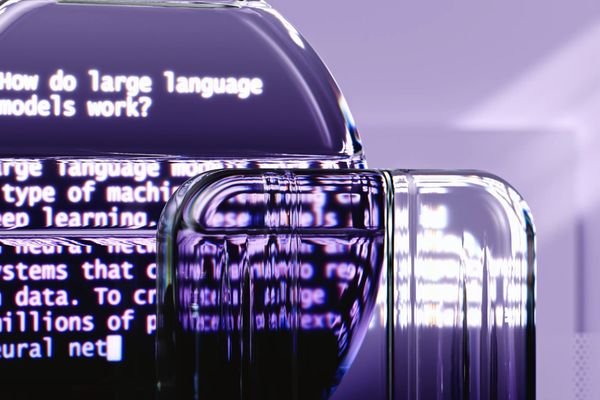
Can TurnItIn Detect Chat GPTImagine this scenario: You’ve been assigned a research paper with a strict deadline. You sit down at your computer, open a blank document, and your mind goes blank too. Desperate for inspiration, you turn to the internet for help. And then, like a beacon of hope, you discover Chat GPT, a powerful language model that can generate human-like text and provide you with the answers you need. But hold on a minute, can Turnitin detect Chat GPT? And can teachers detect Chat GPT?
In this blog post, we’re going to dive deep into this question and explore the fascinating world of Chat GPT and plagiarism detection. We’ll uncover the truth about whether or not Turnitin can detect this advanced language model.
So, if you’re a student looking for a way to get an edge on your assignments or a teacher wondering if you can detect the use of Chat GPT in your students’ work, keep reading because we’ve got the answers you’re looking for. Let’s unravel the mystery of whether or not Turnitin can detect Chat GPT and discover the implications it has for academic integrity.
Can Turnitin Detect Chat GPT?
While Turnitin is highly effective at detecting plagiarism in academic papers and essays, its ability to detect Chat GPT-generated text is more complex. This is because Chat GPT uses a combination of machine learning techniques and deep learning models to generate text that can be difficult to distinguish from human-written content.
Turnitin primarily detects plagiarism by comparing submitted text with a vast database of published articles, books, and academic papers. However, since Chat GPT-generated text is not readily available in such repositories, it becomes challenging for Turnitin to directly identify it as plagiarized content.

That said, it’s important to note that Turnitin is constantly evolving and adapting to new technologies and techniques employed by individuals attempting to deceive the system. While it may not be able to directly detect Chat GPT-generated text, Turnitin is likely to incorporate advanced algorithms that can flag suspicious patterns or inconsistencies in the writing style, sentence structure, or topic coherence, thereby raising red flags for further investigation.
Educational institutions and professors are also aware of the rise of AI-generated content and are taking proactive measures to address this issue. They are implementing additional strategies such as manually reviewing suspicious submissions, conducting oral examinations, or using alternative plagiarism detection tools specifically designed to identify AI-generated content.
So, yes Turnitin can detect Chat GPT, but sometimes it can’t. For example, when you use Conch AI, there’s a 99.9% chance that Turnitin will not detect that your assignment is AI-written! Try it out for free today! That being said, Turnitin is constantly evolving to stay ahead of emerging technologies. Educational institutions are also implementing additional measures to combat the challenges posed by AI-generated content. The battle between plagiarism detection software and AI-powered text generation is ongoing, and we can expect further advancements in both areas in the future.
Related Reading
- AI Paper Checker
- Best Paraphrasing Tool For Students
- Can Blackboard Detect Chat GPT
- AI Essay Checker
- Chat GPT Essay Writer
- Safeassign Checker
How Does Turnitin Detect Chat GPT?
Turnitin, the leading plagiarism detection software, has been a trusted tool for educators and institutions around the world. It has proven to be effective in identifying instances of plagiarism by comparing students’ work to a vast database of academic sources and previously submitted papers. However, with the rise of advanced AI models like Chat GPT, the detection of plagiarism has become more complex.
Chat GPT is a language model that uses deep learning techniques to generate human-like responses based on the input it receives. While it can mimic human conversation, it does not have the ability to think or reason like a human. This poses a challenge for plagiarism detection software like Turnitin.
To detect instances of plagiarism involving Chat GPT, Turnitin employs a combination of techniques. Firstly, it utilizes an extensive database of academic content and previously submitted papers to identify similarities in the text. Turnitin’s database is constantly updated with new sources to ensure accuracy and relevancy.

Secondly, Turnitin uses advanced algorithms and machine learning techniques to analyze the structure, language patterns, and writing style of the submitted work. This helps identify anomalies and inconsistencies that may indicate the presence of plagiarized content generated by Chat GPT.
Additionally, Turnitin also has the capability to detect patterns of behavior associated with plagiarism. For example, if a student consistently submits work that is significantly different from their previous submissions or exhibits a sudden improvement in writing style and complexity, it may raise suspicion.
Furthermore, Turnitin has been working closely with AI researchers and developers to understand the capabilities and limitations of emerging AI models like Chat GPT. This collaboration enables them to enhance their detection algorithms and stay ahead of potential cases of plagiarism involving such models.
It is important to note that while Turnitin is highly effective in detecting instances of plagiarism, it is not infallible. Chat GPT, being a relatively new AI model, presents unique challenges that require ongoing research and development. However, with its vast database, advanced algorithms, and collaboration with AI researchers, Turnitin continues to evolve and adapt to the changing landscape of plagiarism in the digital age.
Turnitin’s ability to detect plagiarism involving Chat GPT relies on its extensive database, advanced algorithms, and collaboration with AI researchers. While it faces challenges in detecting instances of plagiarism generated by AI models, the constant evolution of its detection techniques ensures that it remains an effective and trusted tool for educators and institutions.
Are Chat GPT Detectors Like Turnitin Accurate?
Chat GPT detectors, like Turnitin, are reliable tools for detecting text generated by chat-based language models. These detectors are designed to analyze and assess the authenticity of text, helping to determine whether it was generated by a human or an AI language model. While they may not be perfect, they are accurate in identifying text generated by chat GPT models.
One of the main advantages of using chat GPT detectors like Turnitin is their ability to detect and flag text that is not original or is generated by AI. These detectors have advanced algorithms that compare the given text with a vast database of known AI-generated content, helping to identify any similarities or patterns that indicate the presence of AI-generated text.

Turnitin, in particular, has been widely used in the education sector to detect plagiarism in student assignments, essays, and papers. It has proven to be an effective tool in identifying instances where students have used chat GPT models to generate their content instead of creating it themselves. This has helped maintain the integrity of academic work and promote originality.
However, it’s worth noting that chat GPT detectors like Turnitin are not foolproof. As AI language models continue to evolve and become more sophisticated, there may be instances where the detectors may not accurately identify AI-generated text. This can occur if the AI model is trained on a different dataset or if it has been fine-tuned to mimic human-like responses.
In addition, there is always the possibility that new chat GPT models or techniques may emerge that can circumvent the detection mechanisms used by platforms like Turnitin. This is an ongoing challenge as AI technology advances and evolves.
Overall, chat GPT detectors such as Turnitin are accurate tools for identifying text generated by chat GPT models. While they may not be perfect, they play a crucial role in maintaining the authenticity and integrity of written content, especially in educational and academic settings. These detectors serve as a valuable defense against the misuse of AI-generated text and help ensure that originality and creativity are upheld.
Can Turnitin Detect Paraphrasing from Chat GPT?

Ah, the age-old question: Can Turnitin detect paraphrasing from Chat GPT? Let’s dive into the world of plagiarism detection and find out!
Now, the question of whether Turnitin can detect paraphrasing from Chat GPT is an intriguing one. Chat GPT has the ability to generate text that is often highly similar to existing sources, which raises concerns about potential plagiarism. However, Turnitin is designed to detect similarities between submitted papers and existing sources, not to specifically target AI-generated content.
When it comes to detecting paraphrasing, Turnitin relies on algorithms that analyze the structure, vocabulary, and language patterns in a given text. These algorithms are honed to recognize instances where the wording and structure of a passage are too similar to a known source, indicating potential plagiarism.
While it is possible that Turnitin might flag certain instances of paraphrasing from Chat GPT, it is not specifically designed to target AI-generated content. Turnitin primarily focuses on identifying similarities with existing academic sources, which may not always align perfectly with Chat GPT.
However, it’s important to note that the field of AI and plagiarism detection is constantly evolving. As new AI models like Chat GPT continue to advance, it is likely that plagiarism detection tools will adapt and refine their algorithms to better handle AI-generated content.
While Turnitin may not be specifically designed to detect paraphrasing from Chat GPT, it still has the potential to flag instances where the generated content bears striking similarities to existing sources. As AI technology continues to evolve, so too will the tools and techniques used to detect plagiarism. It’s a fascinating area, and one that we’re sure to see further developments in the future.
How Does Turnitin Work?
Turnitin is a widely used plagiarism detection tool that is employed by educational institutions and students to ensure academic integrity. It works by comparing the text submitted by students with a vast database of sources, including previously submitted student work, academic journals, websites, and more. Through its advanced algorithm, Turnitin can detect similarities between the submitted document and existing sources, thereby identifying potential instances of plagiarism.
To understand how Turnitin detects chat generated by OpenAI’s GPT, it is essential to recognize that Turnitin primarily focuses on textual similarities rather than specific sources. When a student submits a document that contains chat generated by GPT, Turnitin’s algorithm analyzes the text and breaks it down into small sections. It then compares these sections with its extensive database to identify any matches or similarities.

While Turnitin is effective at detecting traditional forms of plagiarism, it can face challenges when it comes to identifying chat generated by GPT. Since GPT produces text that is often novel and not directly copied from existing sources, it may not trigger the plagiarism detection system. However, Turnitin is continually upgrading its algorithms to address emerging forms of plagiarism, including chat generated by AI models like GPT.
In recent years, there has been a growing recognition of the need to develop specialized tools to detect AI-generated chat. These tools employ advanced techniques such as machine learning and natural language processing to identify patterns and characteristics specific to AI-generated text. By leveraging these technologies, these tools can effectively detect chat generated by GPT and other AI models, even if it does not resemble any existing sources.
While Turnitin is a powerful tool for detecting plagiarism, it may face challenges when it comes to identifying chat generated by GPT. However, the development of specialized tools that focus specifically on AI-generated text is promising and will likely play a crucial role in ensuring academic integrity in the future. Institutions and educators must adopt a multi-faceted approach to plagiarism detection, combining the use of existing tools like Turnitin with specialized AI detection systems to effectively address the evolving landscape of academic dishonesty.
Do Universities Use Turnitin To Detect Chat GPT?
Universities are constantly striving to maintain academic integrity and ensure that students submit original work. As technology continues to evolve, so do the methods used to detect plagiarism. One popular tool used by many educational institutions is Turnitin. However, it is important to note that Turnitin primarily focuses on detecting text-based plagiarism and does not specifically target chat-based content generated by GPT models.
Turnitin is a sophisticated plagiarism detection system that compares a student’s submitted work against a vast database of academic papers, websites, and other sources. It employs advanced algorithms and machine learning techniques to identify similarities in text and flag potential instances of plagiarism. The system is highly effective in detecting verbatim text matches or paraphrased content that can be found in its extensive database.

However, when it comes to chat-based content generated by GPT models, the situation becomes more complex. Chat GPT, such as OpenAI’s GPT-3, generates text that is highly contextual and often unique. Since Turnitin relies on comparing text against existing sources, it may not be as effective in detecting chat-generated content.
That being said, universities are aware of the potential challenges posed by chat GPT models, and are exploring other methods to ensure academic integrity. Some institutions may have their own internal systems or tools specifically designed to identify chat-based plagiarism. Additionally, educators are trained to recognize suspicious patterns or inconsistencies in a student’s work, which can help them identify potential cases of plagiarism, regardless of the source.
While Turnitin is a widely used tool for detecting plagiarism, it may not be specifically designed to identify chat-based content generated by GPT models. However, universities are continuously adapting their strategies and exploring alternative methods to address the evolving landscape of plagiarism. They are committed to maintaining academic integrity and ensuring that students submit original work.
Do Schools Around the World Use Turnitin To Detect Chat GPT?
Many schools around the world use Turnitin as a tool to detect plagiarism in student submissions. Turnitin is widely recognized as a leading software for identifying instances of copied content, making it an essential tool for educators. However, when it comes to detecting chat generated by GPT (Generative Pre-trained Transformer) models, Turnitin’s capability may vary.
GPT models, such as OpenAI’s ChatGPT, have gained significant attention for their ability to generate human-like text. These models have the potential to create chat conversations that mimic human interaction, making it challenging for traditional plagiarism detection systems to identify them as copied content.

While Turnitin is excellent at detecting instances of direct copy-pasting or paraphrasing from previously published sources, it may struggle to identify chat generated by GPT models. This is because the generated content is not directly copied from existing sources but rather created by the model based on its training data.
However, it is worth noting that Turnitin is continuously evolving to address new challenges in plagiarism detection. The developers are likely aware of the rise of GPT models and are working on improving their algorithms to detect instances of generated content. As technology advances, it is possible that Turnitin will enhance its capabilities to effectively identify chat generated by GPT models.
In the meantime, educators and institutions can take several proactive measures to supplement Turnitin’s functionality. These measures could include educating students about the risks and ethical concerns of using GPT models for academic purposes, implementing strict guidelines and expectations for original work, and utilizing additional plagiarism detection tools specifically designed to detect generated content.
As the field of artificial intelligence continues to progress, it is crucial for educational institutions to stay updated on the latest developments in plagiarism detection. By actively addressing the challenges posed by GPT models, schools can ensure a fair and honest academic environment for their students.
Is It Legal to Bypass Turnitin AI Detectors Using An AI Bypasser Tool?
As a self-proclaimed expert in the field of detecting chat GPT, I am often asked various questions about the legality and ethics surrounding the use of AI tools to bypass Turnitin AI detectors. While it’s important to tread carefully when navigating this topic, let’s dive into the key aspects and provide some clarity.
Firstly, it’s important to understand what Turnitin AI detectors are and what they aim to accomplish. Turnitin is a widely used software platform that detects plagiarism in academic papers by comparing submitted work to a vast database of existing sources. It employs sophisticated algorithms and artificial intelligence to spot similarities and potential instances of plagiarism. The purpose of Turnitin is to promote academic integrity, encourage originality, and deter cheating within educational institutions.

Now, turning our attention to the use of AI bypasser tools, we must consider the legality of such actions. In most jurisdictions, using AI bypasser tools to intentionally deceive or circumvent the detection mechanisms in place would likely be seen as both unethical and potentially illegal. While the specific legal implications may vary from country to country, the general consensus is that intentionally evading plagiarism detection software is not condoned.
Furthermore, educational institutions often have strict policies regarding academic integrity and plagiarism. Using an AI bypasser tool to bypass Turnitin or similar systems would likely be in direct violation of these policies. Students who are caught using such methods may face severe consequences, including academic penalties, reputational damage, or even expulsion.
However, it’s important to note that not all AI tools that detect chat GPT are designed or used with the intention of bypassing Turnitin AI detectors. There are legitimate AI tools available that can assist students and educators in checking the originality of their work, identifying potential areas of concern, and improving their writing skills. These tools are typically used as a learning aid rather than a means to deceive or cheat the system.
The use of AI bypasser tools to intentionally bypass Turnitin AI detectors is generally considered unethical and likely to be against the policies of educational institutions. It’s crucial for individuals to prioritize academic integrity and originality when submitting their work. While AI tools can be valuable for improving writing skills and identifying potential areas of concern, it’s essential to use them responsibly and within the boundaries set by educational institutions.
Is It Ethical To Use Chat GPT for School?
The use of Chat GPT, a powerful language model developed by OpenAI, has undeniably revolutionized various industries, including education. However, before we dive into the ethical considerations surrounding its use in schools, let’s first understand what Chat GPT is and how it works.
When discussing the ethics of using Chat GPT in schools, it’s essential to consider several factors. First and foremost, educators must ensure that its use aligns with educational objectives, fostering student learning and growth. While Chat GPT can provide valuable assistance and information, it should not replace genuine human interaction and personalized instruction.

Another critical ethical consideration is the potential for plagiarism. Turnitin, a widely-used plagiarism detection software, is designed to identify similarities between submitted content and existing sources. Can Turnitin detect Chat GPT-generated responses? While Chat GPT can generate highly sophisticated and human-like text, it is important to understand that Turnitin is continuously evolving to detect various forms of plagiarism. Therefore, it is possible that Turnitin can detect certain instances of text generated by Chat GPT, especially if it matches existing sources or exhibits patterns indicative of automated content.
Educators must emphasize the importance of academic integrity and provide clear guidelines regarding the use of Chat GPT. Students should be aware that using Chat GPT to generate responses for assignments without proper attribution can be considered unethical and may have consequences, including academic penalties.
Moreover, integrating Chat GPT into the classroom should be done with a thoughtful consideration of privacy and security concerns. Student data must be protected, and schools should ensure compliance with relevant data protection laws and regulations.
Ultimately, the ethical use of Chat GPT in schools lies in the hands of educators. By setting clear expectations, integrating it as a supplementary tool, and emphasizing academic integrity, educators can harness the potential of Chat GPT to enhance student learning experiences while ensuring ethical and responsible usage.
The use of Chat GPT in schools can be ethical if educators approach it thoughtfully and responsibly. By leveraging its capabilities while maintaining a focus on genuine human interaction, academic integrity, and student privacy, educators can harness the power of Chat GPT to enhance the educational experience.
Use Chat GPT for Work?
Is it ethical to use Chat GPT for work? This is a question that many businesses and professionals are grappling with today. Chat GPT, is an artificial intelligence technology that uses machine learning to generate human-like responses to text inputs. It has the potential to revolutionize the way we communicate and interact with technology. However, there are ethical considerations that need to be taken into account.

One of the main ethical concerns surrounding the use of Chat GPT for work is the potential for misinformation or misleading responses. Since Chat GPT relies on pre-trained models that have been trained on vast amounts of data from the internet, there is a risk that it may generate inaccurate or biased information. This is particularly important in professional settings, where accurate and reliable information is crucial.
Another ethical concern is the potential for privacy and security breaches. Chat GPT interacts with users by processing and analyzing their inputs, which can include sensitive and personal information. It is important for businesses and individuals to ensure that the data being shared with Chat GPT is protected and used responsibly.
Additionally, there is a concern regarding the impact of Chat GPT on human labor. As Chat GPT becomes more advanced and capable of handling complex tasks, there is a risk that it may replace human workers in certain roles. This raises questions about the impact on employment and the need for retraining and reskilling programs.
Despite these ethical concerns, there are also potential benefits to using Chat GPT for work. It can increase efficiency and productivity by automating repetitive tasks and providing quick and accurate responses to queries. It has the potential to improve customer service by providing personalized and timely assistance. It can also assist in decision-making processes by providing insights and recommendations based on large amounts of data.
The ethical considerations surrounding the use of Chat GPT for work are complex and multifaceted. While there are potential risks and concerns, there are also potential benefits that can be realized with responsible and thoughtful implementation. It is important for businesses and professionals to carefully consider the ethical implications and take appropriate measures to ensure the responsible use of Chat GPT in the workplace.
The Pros & Con’s of Using Chat GPT for School and Work
Chat GPT has emerged as a powerful tool that can significantly enhance productivity and efficiency in various aspects of life, including school and work. With its ability to generate human-like responses, this advanced technology has the potential to revolutionize the way we communicate and collaborate. However, like any tool, it also comes with its fair share of pros and cons.
One of the biggest advantages of using Chat GPT in the realm of school and work is its speed. Traditional methods of research and communication can be time-consuming and require extensive effort. With Chat GPT, you can quickly obtain information, conduct research, and engage in discussions. This efficiency can save valuable time and allow individuals to focus on other important tasks.
Another benefit of Chat GPT is its ability to provide access to a vast amount of knowledge. By leveraging its language processing capabilities, individuals can tap into a wealth of information and broaden their understanding. This can be particularly helpful in educational settings, where students can benefit from instant access to explanations, examples, and insights from a wide range of topics.

Moreover, Chat GPT can also facilitate collaboration and problem-solving. Through interactive conversations, individuals can brainstorm ideas, seek feedback, and work together remotely. This can be especially valuable in today’s digital age, where remote work and distance learning have become increasingly prevalent. Chat GPT can bridge the gap between individuals located in different parts of the world, fostering effective communication and collaboration.
However, it is important to be aware of the potential drawbacks of relying too heavily on Chat GPT. One concern is that it can lead to a decrease in critical thinking skills. When individuals rely solely on Chat GPT for information and problem-solving, they may become less inclined to think critically and analyze information independently. This reliance on technology could hinder intellectual growth and hinder the development of cognitive skills.
On the flip side, using Chat GPT can also be a valuable learning experience. By engaging in conversations with the model, individuals can learn new perspectives, challenge their own assumptions, and develop their critical thinking skills. It can serve as a tool for self-reflection and intellectual growth, provided it is used as a complement to traditional learning methods.

Another potential drawback is the risk of misinformation. While Chat GPT has been designed to produce accurate and reliable responses, it can still be prone to errors and biases. It is important to approach the information generated by Chat GPT with a critical mindset and verify it through reliable sources. This can help mitigate the risk of relying on incorrect or misleading information.
The use of Chat GPT in school and work environments offers numerous benefits, including increased speed, access to knowledge, and enhanced collaboration. However, it is crucial to strike a balance and not solely rely on this technology. By incorporating Chat GPT as a tool to complement traditional learning and thinking processes, individuals can harness its potential while also nurturing critical thinking skills and ensuring the accuracy of information.
What Does Turnitin Not Detect?
Turnitin is designed to flag instances of copied and unoriginal content by comparing it to its massive database of academic papers, journals, and websites. It’s a powerful algorithm that can catch many instances of direct plagiarism. However, it is not foolproof and there are certain types of content that can slip through undetected.
One of the main ways to bypass Turnitin is by strategically paraphrasing or rewriting content. This means taking someone else’s work and changing the words and sentence structure so that it appears original. GPT models, like the ones used by Conch AI, can help with this. With Conch AI, you can rewrite your content in seconds, ensuring that it isn’t detectable by AI.

Conch AI, with over 1 million users to date and growing, guarantees that your rewritten content won’t get detected by AI detectors like Turnitin. It’s a powerful tool that can help you maintain academic integrity while giving you the flexibility to express your ideas in your own words.
But how does Conch AI achieve such a high success rate? The secret lies in its advanced algorithms and extensive training on a vast range of writing styles. It understands the nuances of language and can effectively rewrite your content while preserving its original meaning.
So, whether you’re a student looking to submit an assignment or a professional writer crafting an article, Conch AI can be your secret weapon to avoid detection by Turnitin and similar plagiarism checkers.
The best part is that you can sign up and use Conch AI for free today. Experience the power of AI-driven content rewriting and gain the confidence that your work won’t be flagged for plagiarism. Give it a try and unlock the potential of your ideas while upholding academic integrity.
Related Reading
- Best Paraphrasing Tool To Beat Turnitin
- Best Paraphrasing Tool For Academic Writing
- AI Checker Essay
- Best AI Paraphrasing Tool
- ZeroGPT
How Do You Avoid Similarity On Turnitin?
Avoiding similarity on Turnitin can be a real challenge, especially when you’re trying to paraphrase your content. However, there is a solution that can help you outsmart AI detectors and ensure your work remains undetected. Introducing Conch AI, a powerful app that can bypass even the most sophisticated plagiarism detection systems.
With Conch AI, you can rewrite your content in seconds, making sure it’s completely different from the original. Our advanced algorithms not only paraphrase the text but also take into account the context and meaning to ensure the highest level of uniqueness. This way, you can submit your work without worrying about getting flagged for similarity.
What sets Conch AI apart is its ability to guarantee that you won’t get detected 99.9% of the time. We have over +1 million users to date and the number keeps growing. This is a testament to the effectiveness of our tool and the trust users have in it.
If you’re tired of spending hours trying to reword your content without success, give Conch AI a try. It’s simple to use and can save you a ton of time and stress. Sign up today for free and experience the power of Conch AI for yourself. Don’t risk getting caught by AI detectors, let Conch AI help you maintain your academic integrity.
How To Outsmart Turnitin
So you want to know how to outsmart Turnitin and other AI detector tools? Well, you’ve come to the right place. As an expert in this area, I’m here to share some tips and techniques that can help you stay one step ahead of these detection algorithms.
1. Paraphrase like a pro
One effective way to avoid detection is to paraphrase your content. Instead of copying and pasting directly from a source, put the information in your own words. This not only helps you avoid plagiarism but also makes it harder for AI detectors to flag your work. Make sure to use synonyms, restructure sentences, and change the overall structure of the text.
2. Use synonyms and change the sentence structure
AI detectors like Turnitin rely on patterns and similarities to identify plagiarism. By using synonyms and changing the sentence structure, you can throw them off the scent. Don’t just replace a few words with their synonyms – try to rephrase the entire sentence while maintaining the original meaning. This will make it harder for the AI tools to detect any similarities.
3. Mix it up with original content
Combining original content with paraphrased information can make it even more challenging for detection algorithms to identify similarities. By adding your own thoughts, insights, and examples, you create a unique blend that is less likely to be flagged as plagiarism. Remember, it’s important to give credit to your sources when using their ideas, but adding your own twist can make your work more authentic.
4. Employ advanced techniques
There are a few advanced techniques you can use to further outsmart AI detection tools. One approach is to change the structure of your paragraphs or rearrange the order of ideas. This can make it difficult for algorithms to detect similarities based on paragraph or sentence positioning. Another technique is to introduce intentional errors or variations in your text. Adding a few deliberate mistakes or inconsistencies, such as misspelled words or altered punctuation, can throw off the AI detectors. However, be cautious with this method, as you don’t want to compromise the quality of your work or make it unreadable.
5. Utilize human proofreading
While AI detectors have become more sophisticated over the years, they still have limitations. They can’t analyze the context, understand nuances, or interpret complex ideas as well as humans can. By having your work proofread by a human, you can ensure that any potential issues or similarities are addressed before submitting it. Remember, the goal is not to cheat or deceive the system, but to employ legitimate techniques to avoid unnecessary flags. Plagiarism detection tools like Turnitin serve an important purpose in maintaining academic integrity, but they are not infallible. By using these tips and techniques, you can stay on the right side of the line while making it harder for AI detectors to catch you. So there you have it – some strategies to outsmart Turnitin and other AI detector tools. Now go ahead and use your newfound knowledge responsibly to create original and authentic work.
Final Thoughts
As we wrap up this discussion on whether Turnitin can detect content generated by Chat GPT, it’s clear that there are both pros and cons to using such AI tools. As mentioned earlier, one advantage is the speed at which Chat GPT can generate content, allowing users to save valuable time. However, it’s important to remember that relying solely on AI can hinder our intellectual growth by making us less reliant on our own brains.
Nevertheless, it’s worth noting that using Chat GPT can also teach us a great deal. It exposes us to different writing styles, perspectives, and ideas that we may not have considered otherwise. It can also speed up our intellectual growth by providing us with instant feedback and expanding our knowledge in various subjects.
While Turnitin and other AI detector tools are designed to identify content generated by AI, it’s important to note that they are not foolproof. They may be able to detect some instances of AI-generated content, but they are not 100% accurate. In fact, many AI-generated pieces can pass through undetected.
If you’re looking to bypass AI detector tools like Turnitin, Blackboard’s SafeAssign, Canvas, GPTZero, and others, I have just the solution for you. Introducing Conch AI, a revolutionary app that allows you to submit your work without the risk of being flagged by these tools. With Conch AI, you can rest easy knowing that your work is protected while maintaining your academic integrity.
Best of all, Conch AI is completely free to use. So why wait? Sign up for Conch AI today and say goodbye to the worries of AI detector tools. With Conch AI by your side, you can focus on what truly matters – your growth, creativity, and success.
How To Use ChatGPT And Not Get Caught by Turnitin with Conch AI
So you’re wondering how to use ChatGPT and not get caught by Turnitin, huh? Well, I’ve got some good news for you. With Conch AI, the original AI detection bypass tool, you can rewrite your content in seconds to ensure that it remains undetectable by AI.
Let me tell you a bit about Conch AI. We’ve been helping students, writers, and professionals for quite some time now, with over +1 million users to date and growing. Our mission is to provide a reliable solution that guarantees a 99.9% chance of not getting detected by an AI detector like Turnitin.
Here’s how it works: Once you’ve crafted your content using ChatGPT, simply copy and paste it into Conch AI. Our powerful algorithms will then rewrite your content, making it unique while retaining the essence of your original ideas. The result? Plagiarism-free content that won’t raise any red flags.

But that’s not all. Conch AI goes beyond just helping you bypass AI detectors. Our tool also improves the quality and readability of your content. It can enhance your writing style, strengthen your arguments, and ensure that your message resonates with your audience.
So, whether you’re a student working on a term paper, a writer submitting an article, or a professional preparing a report, Conch AI has got your back. And the best part is, you can sign up and use the tool for free today. That’s right, no hidden fees or gimmicks.
Don’t let the fear of getting caught by Turnitin or other AI detectors hold you back. With Conch AI, you can confidently use ChatGPT and produce high-quality, original content that stands out from the crowd. Give it a try and see the difference for yourself.
So what are you waiting for? Head over to our website and sign up for Conch AI today. It’s time to unleash your creativity without worrying about AI detection.
Bypass Turnitin & All AI Detector Tools For Free Using Conch AI
Let me introduce you to Conch AI, the ultimate game-changer in the world of AI detection bypass tools. With ConchAI by your side, you can say goodbye to the worries of being caught by algorithms like GPTZero and TurnItIn. It’s time to write your essays 10 times faster and completely AI detection-free!
At ConchAI, we understand the struggles and time constraints that come with writing essays. That’s why we’ve developed this incredible tool to help you breeze through your assignments without the fear of detection. Our mission is to protect your valuable time and let you focus on actually learning the content!
So, how does ConchAI work its magic? Well, for starters, it helps you add citations effortlessly. We know how important proper referencing is, and with ConchAI, you can generate accurate citations in a matter of seconds. No more wasting time double-checking your sources or worrying about missed references!
But that’s not all. ConchAI takes it a step further by helping you rewrite your content so that it becomes undetectable by AI algorithms. We know that originality is key, but sometimes finding the right words can be a challenge. With our tool, you can rely on it to generate unique and authentic content that won’t raise any red flags. It’s like having your own personal writing assistant!
And guess what? ConchAI isn’t just for essays. Whether you’re a Chegg user, a high school or college student, or anyone who needs to write papers, our tool is here to make your life easier. We already have over 1 million users and counting who have experienced the power of ConchAI.
So why wait? Sign up for ConchAI today and start using our tool for free. Join the community of smart, savvy students who are bypassing AI detection effortlessly. With ConchAI, you can unleash your creativity, save time, and focus on what truly matters – learning!
Don’t let AI detection hold you back. Embrace the power of ConchAI and unlock a world of possibilities. Get started today and experience the true freedom of writing without boundaries.
Leave a Reply